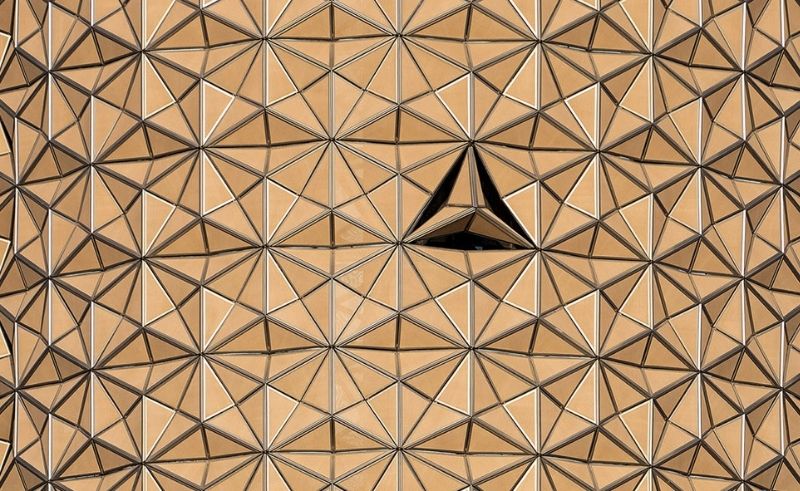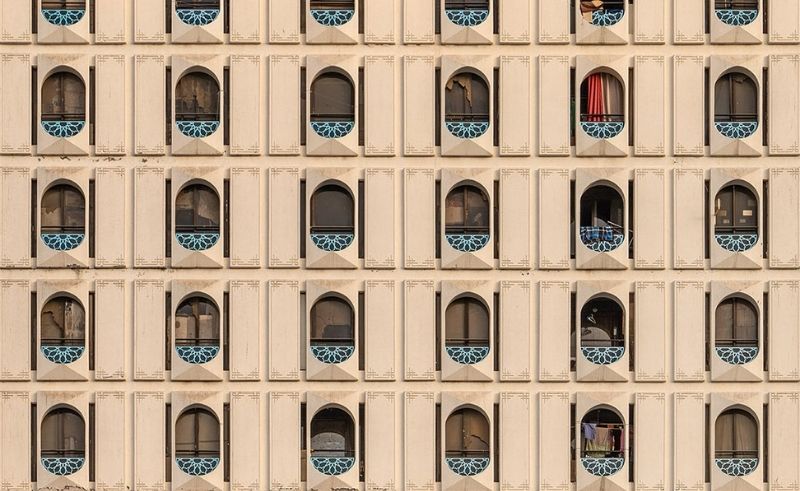Facade to Facade: Hussain AlMoosawi’s Archive of UAE’s Urban Identity
Through Facade to Facade, Emirati photographer Hussain AlMoosawi documents the UAE’s architectural identity, turning overlooked facades into a visual archive that is both research and art.

For Hussain AlMoosawi, photographing facades is more about sharpening our collective eye. Through his long-term project Facade to Facade, the Emirati designer, photographer, and storyteller has turned the act of looking at a building into a sustained practice of cultural memory and design analysis.
-8da9059d-afe5-4d6d-9418-f20fdd43c327.jpg) His relationship with urban photography began in Melbourne between 2009 and 2012. “Photography became the tool to document and understand the built environment around me,” he recalls. What started as an instinct to capture overlooked elements soon evolved into a method defined by two principles he still holds today: a dedication to subject matter, and an objective vantage point that strips away distraction.
His relationship with urban photography began in Melbourne between 2009 and 2012. “Photography became the tool to document and understand the built environment around me,” he recalls. What started as an instinct to capture overlooked elements soon evolved into a method defined by two principles he still holds today: a dedication to subject matter, and an objective vantage point that strips away distraction.
-76cbb26a-5a6e-4739-bbd6-d96919fe8e6d.jpg) Returning to the UAE in 2013, AlMoosawi spent years reacquainting himself with the local landscape. “Deep within, I intended to photograph architecture, but it took me a stretch of years to define the scope that later was shaped by symmetry,” he explains how that symmetry – now his signature lens – became the gateway to modern and contemporary facades across the country.
Returning to the UAE in 2013, AlMoosawi spent years reacquainting himself with the local landscape. “Deep within, I intended to photograph architecture, but it took me a stretch of years to define the scope that later was shaped by symmetry,” he explains how that symmetry – now his signature lens – became the gateway to modern and contemporary facades across the country.
-6145427f-8cf2-4935-b961-209aa50467f7.jpg) Unlike traditional cityscape photography, his process is more forensic and intimate. “The first step is developing a form of emotion towards a building and trying to absorb the energy it has to offer, without having the camera as an intermediate,” he says. He circles each building, tracing its dialogue with natural light before moving closer to capture details. Time of day and season are decisive as he elaborates: “With Facade to Facade I observe a building to identify a 10-minute window for when it’s best photographed. This guarantees more objectivity in how we see these facades.”
Unlike traditional cityscape photography, his process is more forensic and intimate. “The first step is developing a form of emotion towards a building and trying to absorb the energy it has to offer, without having the camera as an intermediate,” he says. He circles each building, tracing its dialogue with natural light before moving closer to capture details. Time of day and season are decisive as he elaborates: “With Facade to Facade I observe a building to identify a 10-minute window for when it’s best photographed. This guarantees more objectivity in how we see these facades.”
-b447de58-c1e4-4e35-a19c-59ee351184f8.jpg) His selection process is just as meticulous. Early in the project, he sought out hero buildings. Today, he scans cities street by street, attuned to facades that carry a distinct character, whether or not he personally likes them. Typologies also matter, “A given facade might not have a lot of character to offer, but collectively along with those of the same category they form a typology that encapsulates an architectural impression of a locality,” he tells SceneHome.
His selection process is just as meticulous. Early in the project, he sought out hero buildings. Today, he scans cities street by street, attuned to facades that carry a distinct character, whether or not he personally likes them. Typologies also matter, “A given facade might not have a lot of character to offer, but collectively along with those of the same category they form a typology that encapsulates an architectural impression of a locality,” he tells SceneHome.
-4c494b36-a025-4826-853c-d56b51930754.jpg) The photographic archive he is creating is a mix of documentation and interpretation. While AlMoosawi insists the project began as research to understand, document and study, the strict vantage point turned it into an artistic gesture. “This duality is what adds complexity to the project, what makes it successful is getting a wide range of people engaged with the subject matter, regardless of whether they perceive it as art or mere documentation.” he reflects.
The photographic archive he is creating is a mix of documentation and interpretation. While AlMoosawi insists the project began as research to understand, document and study, the strict vantage point turned it into an artistic gesture. “This duality is what adds complexity to the project, what makes it successful is getting a wide range of people engaged with the subject matter, regardless of whether they perceive it as art or mere documentation.” he reflects.
-26812b79-972a-4988-9c91-1198349b7a8f.jpg)
To him, certain buildings resonate more personally. The Dubai World Trade Centre, completed in 1979, remains a favourite. “Growing up in Dubai, this building took the centre stage and was highly connected with snippets of childhood memories. Photographing it early in the project was a no brainer.” he adds.

Beyond nostalgia, the project raises questions about how architecture expresses identity. Facades from the 1970s and 1980s, he argues, still embody modernist ideals rooted in regional culture. They are living reminders of the country’s early decades and deserve protection. Contemporary architecture, in contrast, is “a work in progress,” as he describes them. For him, the photographs are less about declaring verdicts than creating the archive that future generations will interpret.
 “I hope people will pay more attention and appreciate what’s around them,” AlMoosawi says. In car-dominated cities, the act of walking, looking, and observing is often lost; this is why through each frame, AlMoosawi restores the simplest act of design appreciation: to truly see.
photography credits: Hussain AlMoosawi
“I hope people will pay more attention and appreciate what’s around them,” AlMoosawi says. In car-dominated cities, the act of walking, looking, and observing is often lost; this is why through each frame, AlMoosawi restores the simplest act of design appreciation: to truly see.
photography credits: Hussain AlMoosawi























